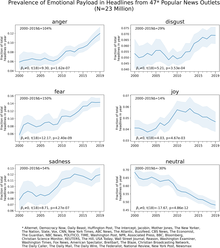
The New York Times (NYT) is an American daily newspaper based in New York City. The New York Times covers domestic, national, and international news, and publishes opinion pieces, investigative reports, and reviews. As one of the longest-running newspapers in the United States, it serves as one of the country's newspapers of record. As of May 2024, the newspaper has a readership of 9.9 million digital-only subscribers and 640,000 print subscribers, making it the second-largest newspaper in the country by print circulation. The Times has received 137 Pulitzer Prizes as of 2023, the most of any publication, among other accolades. The New York Times is published by The New York Times Company; since 1896, the company has been chaired by the Ochs-Sulzberger family, including its current chairman and the paper's publisher, A. G. Sulzberger. The Times is headquartered at The New York Times Building in Manhattan.

A tabloid is a newspaper with a compact page size smaller than broadsheet. There is no standard size for this newspaper format.

A broadsheet is the largest newspaper format and is characterized by long vertical pages, typically of 22.5 inches (57 cm). Other common newspaper formats include the smaller Berliner and tabloid–compact formats.
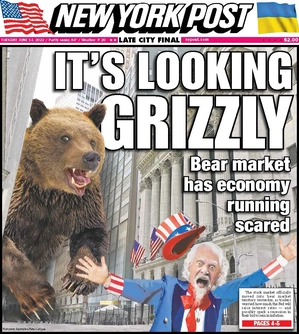
The New York Post is an American conservative daily tabloid newspaper published in New York City. The Post also operates three online sites, NYPost.com, PageSix.com, a gossip site, and Decider.com, an entertainment site.
News style, journalistic style, or news-writing style is the prose style used for news reporting in media, such as newspapers, radio and television.

The Daily Telegraph, also nicknamed The Tele, is an Australian tabloid newspaper published by Nationwide News Pty Limited, a subsidiary of News Corp Australia, itself a subsidiary of News Corp. It is published Monday through Saturday and is available throughout Sydney, across most of regional and remote New South Wales, the Australian Capital Territory and South East Queensland.

The Daily Mirror is a British national daily tabloid newspaper. Founded in 1903, it is owned by parent company Reach plc. From 1985 to 1987, and from 1997 to 2002, the title on its masthead was simply The Mirror. It had an average daily print circulation of 716,923 in December 2016, dropping to 587,803 the following year. Its Sunday sister paper is the Sunday Mirror. Unlike other major British tabloids such as The Sun and the Daily Mail, the Mirror has no separate Scottish edition; this function is performed by the Daily Record and the Sunday Mail, which incorporate certain stories from the Mirror that are of Scottish significance.

The Daily Express is a national daily United Kingdom middle-market newspaper printed in tabloid format. Published in London, it is the flagship of Express Newspapers, owned by publisher Reach plc. It was first published as a broadsheet in 1900 by Sir Arthur Pearson. Its sister paper, the Sunday Express, was launched in 1918. In June 2022, it had an average daily circulation of 201,608.
Journalese is the artificial or hyperbolic, and sometimes over-abbreviated, language regarded as characteristic of the news style used in popular media. Joe Grimm, formerly of the Detroit Free Press, likened journalese to a "stage voice": "We write journalese out of habit, sometimes from misguided training, and to sound urgent, authoritative and, well, journalistic. But it doesn't do any of that."
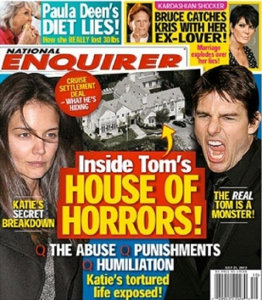
The National Enquirer is an American tabloid newspaper. Founded in 1926, the newspaper has undergone a number of changes over the years.

The New York Daily News, officially titled the Daily News, is an American newspaper based in Jersey City, New Jersey. It was founded in 1919 by Joseph Medill Patterson in New York City as the Illustrated Daily News.
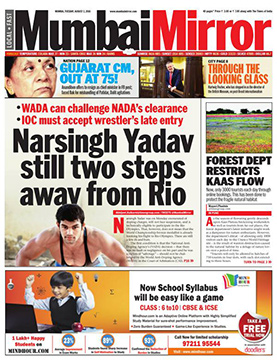
Mumbai Mirror was an English-language newspaper that was initially launched in 2005 by the Times Group as part of a ringfencing tactic to fight emerging competition in the city, mainly from Zee–Bhaskar's then joint newspaper, Daily News and Analysis. Mumbai Mirror was downsized and digitised by its owners at The Times Group on 5 December 2020 during the Covid-19 lockdown.
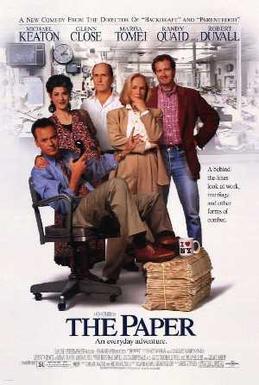
The Paper is a 1994 American comedy-drama film directed by Ron Howard and starring Michael Keaton, Glenn Close, Marisa Tomei, Randy Quaid and Robert Duvall. It received an Academy Award nomination for Best Original Song for "Make Up Your Mind", which was written and performed by Randy Newman.
"Sticks Nix Hick Pix" is a famous headline printed in Variety, a newspaper covering Hollywood and the entertainment industry, on July 17, 1935, over an article about the reaction of rural audiences to movies about rural life. Variety was known for its playful use of Broadway and Hollywood jargon to pack as much meaning as possible into a small headline or article; examples include "H'wood" and "biz".
Libertatea is a Romanian daily newspaper and online news website covering current affairs, entertainment, sports and lifestyle. It was founded on December 22, 1989 (12:45 p.m.), by Octavian Andronic, as "the first independent newspaper of the Romanian Revolution of 1989".
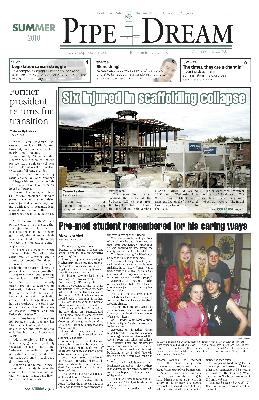
Pipe Dream is the student newspaper of Binghamton University in Vestal, N.Y. Content is published online throughout the week at bupipedream.com, as well as in print every Tuesday.
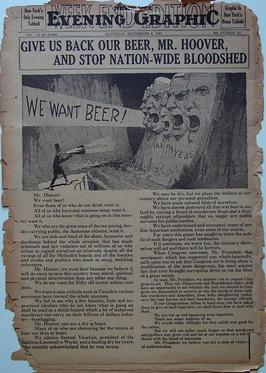
The New York Evening Graphic was a tabloid newspaper published from 1924 to 1932 by Macfadden Publications. Exploitative and mendacious in its short life, the Graphic exemplified tabloid journalism and launched the careers of Walter Winchell, Louis Sobol, and sportswriter-turned-columnist and television host Ed Sullivan.

The Sun is a British tabloid newspaper, published by the News Group Newspapers division of News UK, itself a wholly owned subsidiary of Lachlan Murdoch's News Corp. It was founded as a broadsheet in 1964 as a successor to the Daily Herald, and became a tabloid in 1969 after it was purchased by its current owner. The Sun had the largest daily newspaper circulation in the United Kingdom, but was overtaken by freesheet rival Metro in March 2018.

"Best Sex I've Ever Had" is a headline that appeared on the front page of the New York Post on February 16, 1990. The headline is purportedly a quote from Marla Maples, who would become the second wife of businessman Donald Trump. The quote refers to Trump's supposed sexual prowess. Trump was married to Ivana Trump at the time of the headline; the couple's divorce was granted that year. The headline appeared during a media frenzy concerning the Trumps' marriage and his affair with Maples.

